BARE Trilam Tech Dry suit
Standard latex wrist seals
I put on Rolock 3 glove system to replace an old simple Si-Tech (non-locking) glove system. I like it, but when putting it on I am pretty sure I put too much pressure on the built in wrist seals. After some unnatural movements on a recent dive the wrist seal separated from the suit slightly and got a slow leak in the wrist. I see some more separation (pics attached), and a bit on the other wrist.
I think I can patch this up with Aquaseal FD but would love any suggestions on technique.
Thinking -
1. use a plastic syringe to squeeze the compound into the trouble spots
2. Then put a thin layer of aquaseal around the full circumference of the wrist
3. Let it sit for 10-15 min to cure a bit
4. But a bottle or jar through the wrist to keep the shape of the seal round
Welcome suggestions! Thanks in advance.
- Eric



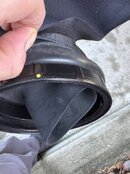
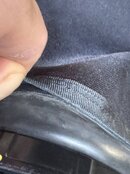
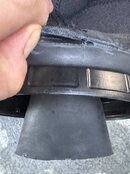





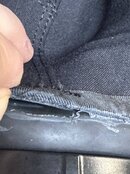
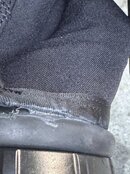
Standard latex wrist seals
I put on Rolock 3 glove system to replace an old simple Si-Tech (non-locking) glove system. I like it, but when putting it on I am pretty sure I put too much pressure on the built in wrist seals. After some unnatural movements on a recent dive the wrist seal separated from the suit slightly and got a slow leak in the wrist. I see some more separation (pics attached), and a bit on the other wrist.
I think I can patch this up with Aquaseal FD but would love any suggestions on technique.
Thinking -
1. use a plastic syringe to squeeze the compound into the trouble spots
2. Then put a thin layer of aquaseal around the full circumference of the wrist
3. Let it sit for 10-15 min to cure a bit
4. But a bottle or jar through the wrist to keep the shape of the seal round
Welcome suggestions! Thanks in advance.
- Eric












